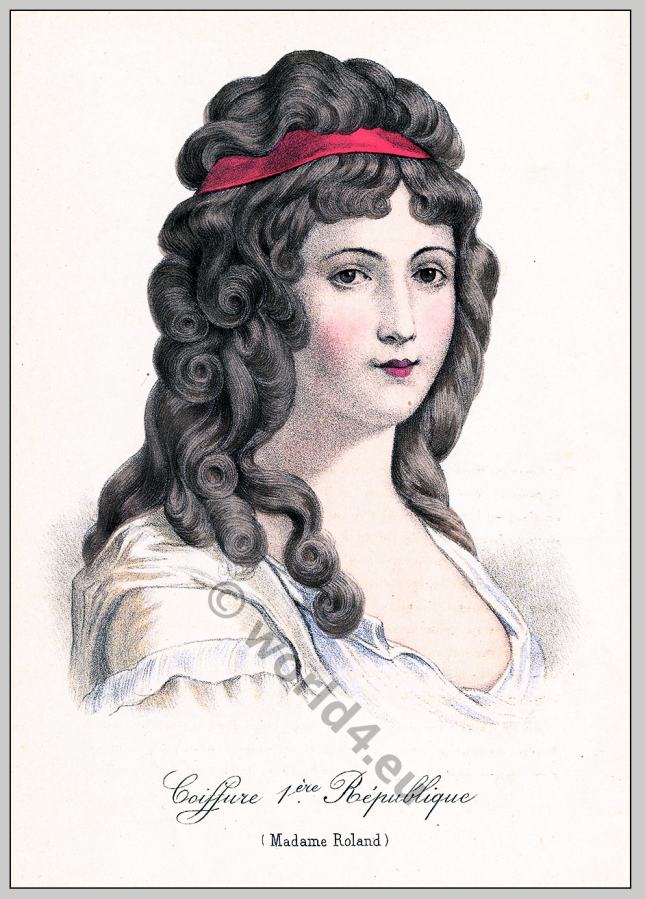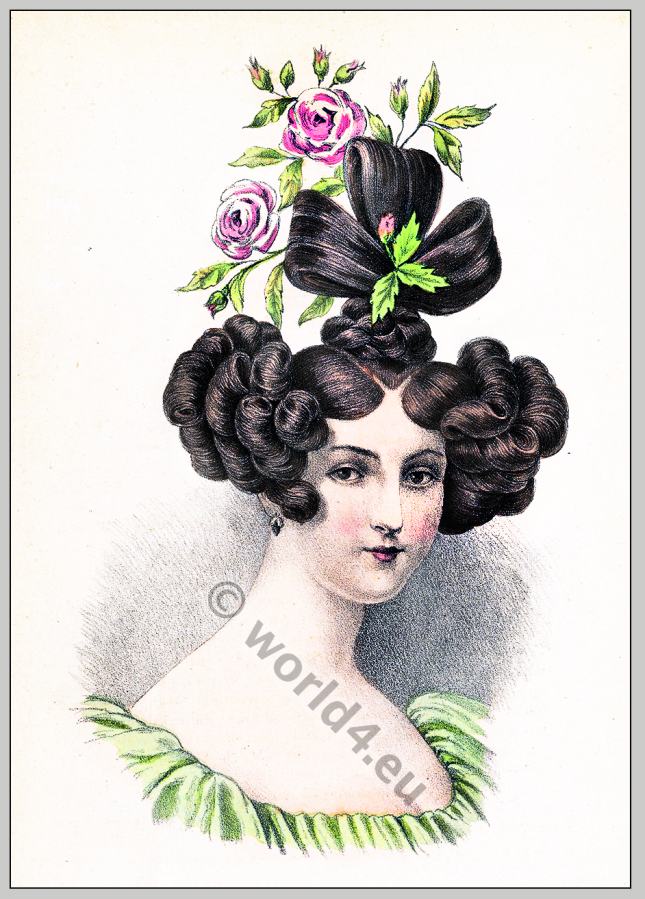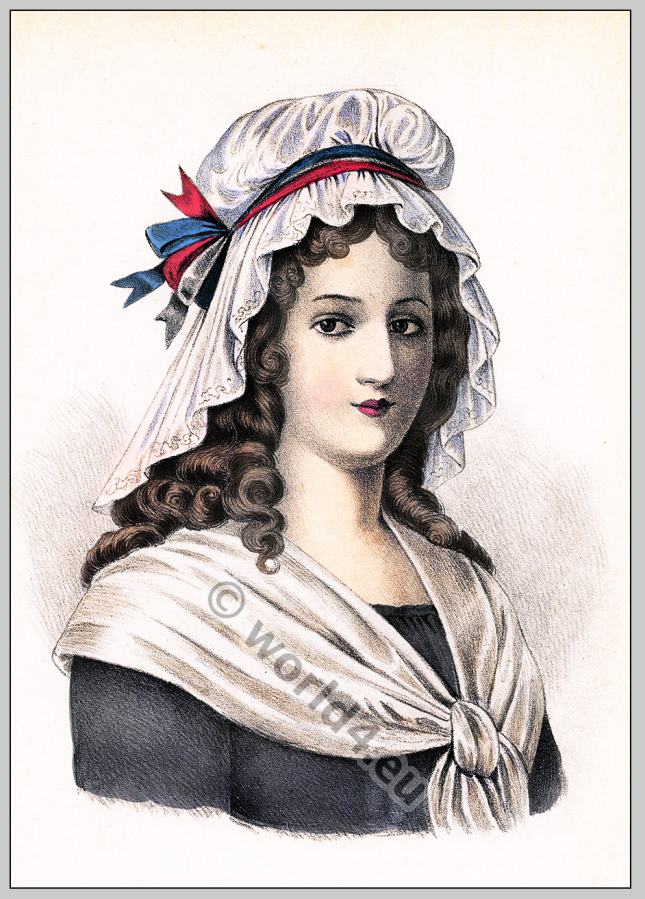
Traditional Chinese female coiffure from Guangzhou, Shantou, Ningpo and Shanghai.
THE hair of the Chinese is uniformly black, or very dark brown, which color is clearly seen when a single hair is viewed beneath the microscope by strong transmitted light. Their hair, too, is uniformly straight, and the men all wear the queue, while the women dress their tresses into a diversity of artistic forms to suit the prevailing fashion of the locality in which they reside.
Thus No. 26 shows a young Cantonese (Guangzhou) girl of the middle class wearing a head-dress which consists of an embroidered belt of satin, ornamented with artificial Rowers, and kingfishers’ feathers, and fringed with fine black silk depending from it in front to match the hair, which is cut straight across the forehead. It is a comely face, but before many years are over the natural peach bloom of her young cheeks will be replaced by the fashionable patches of vermilion which conceal the careworn features of married serfdom in China.
Guangzhou (exonym: Canton, Chinese 廣州市 / 广州市,) is a city in the south of the People’s Republic of China. It is the capital of the Guangdong province and an important industrial and commercial centre. In China, Guangzhou is also called ‘City of the goats’. The landmark of the city is a statue with five goats.
Guangzhou is the largest city in the Pearl River Delta, one of the largest contiguous urban landscapes (megalopolises) in the world. The Pearl River Delta includes Guangzhou, Hong Kong, Shenzhen, Dongguan, Foshan, Jiangmen, Huizhou, Zhongshan and Zhuhai.
No. 27 shows the covering worn by the women of Southern China during the winter months. It consists of a square embroidered handkerchief of cotton or silk, folded diagonally and tied by two of the ends beneath the chin.
Shantou is an independent city in Guangdong Province in the People’s Republic of China. Shantou is located on the South China Sea at the border to Fujian Province. The Tropic of Cancer runs through the city.
No. 28, a young Swatow (Shantou) girl, exhibits one style of coiffure adopted in that part of the province; while No. 29 is another fashion belonging to the women of the same place, but of a different clan. The facial type presented in this picture is one peculiar to certain of the natives of Shantou. The nose is prominent, well-formed, and straight, the upper lip short, the teeth white and regular, and the chin well cut. As will be observed, the chignons are each of them different, and all alike deserve careful study by the ladies of Western lands. The dressing of the hair into fantastic forms is naturally a difficult task, and one which, most probably, would shut out spurious imitators in our own country, for few could throw their whole mind and energy into the work. In China, with these women, the hair is only done once or twice a week, necessity requiring the wearer to economize time. With a view to avoid injuring the elaborate coiffure during sleep, the lady supports the nape of her neck upon a pillar of earthenware or wood, high enough to protect the design from being damaged.
Ningbo or Ningpo is a coastal town in the eastern Chinese province of Zhejiang. It is one of the 15 sub-provincial cities of China and therefore – after Hangzhou – the second most important city of this province. Ningbo is located in the south of the densely populated Yangtze Estuary in the Ningshao Plain, opposite the East China Sea.
In our land this device would imply a sacrifice of comfort, and here and there a case of strangulation would ensue; but no very grave objections could be raised to the novel chignon and its midnight scaffolding, when the interests of fashion are at stake. No. 30 is the chignon par excellence. The lady who wears it is of Ningpo extraction, and by profession a barber, who also makes wigs and chignons for sale. No. 31 gives the quaint mode of dressing the hair in vogue among the women of Shanghai; these conceal their raven tresses beneath a black velvet snood edged with white or pale blue, and remarkable for its quiet simplicity.
Shanghai is the most important industrial city in the People’s Republic of China and one of the largest cities in the world. The city is an important traffic junction and an important cultural and educational centre with numerous universities, colleges, research institutions, theatres and museums.
Source: Illustrations of China and its people: a series of two hundred photographs, with letterpress descriptive of the places and people represented by John Thomson. London: Sampson Low, Marston, Low, and Searle 1873.
Related
Discover more from World4 Costume Culture History
Subscribe to get the latest posts sent to your email.






